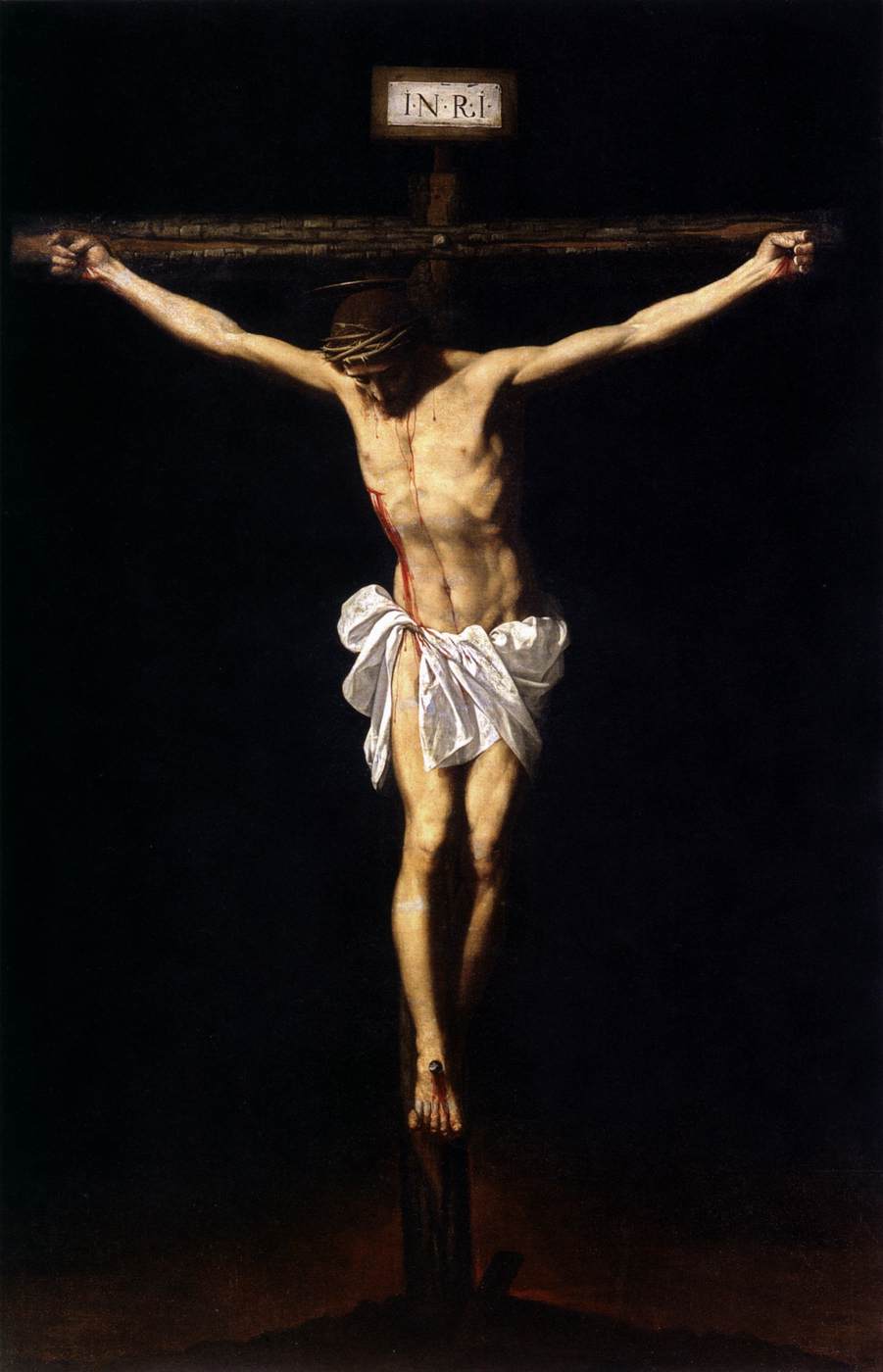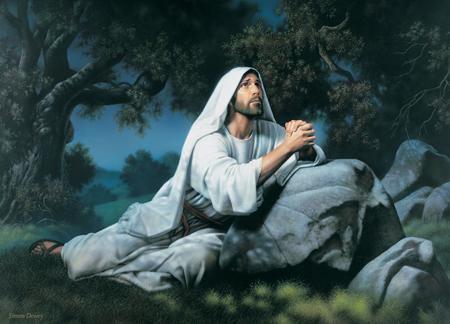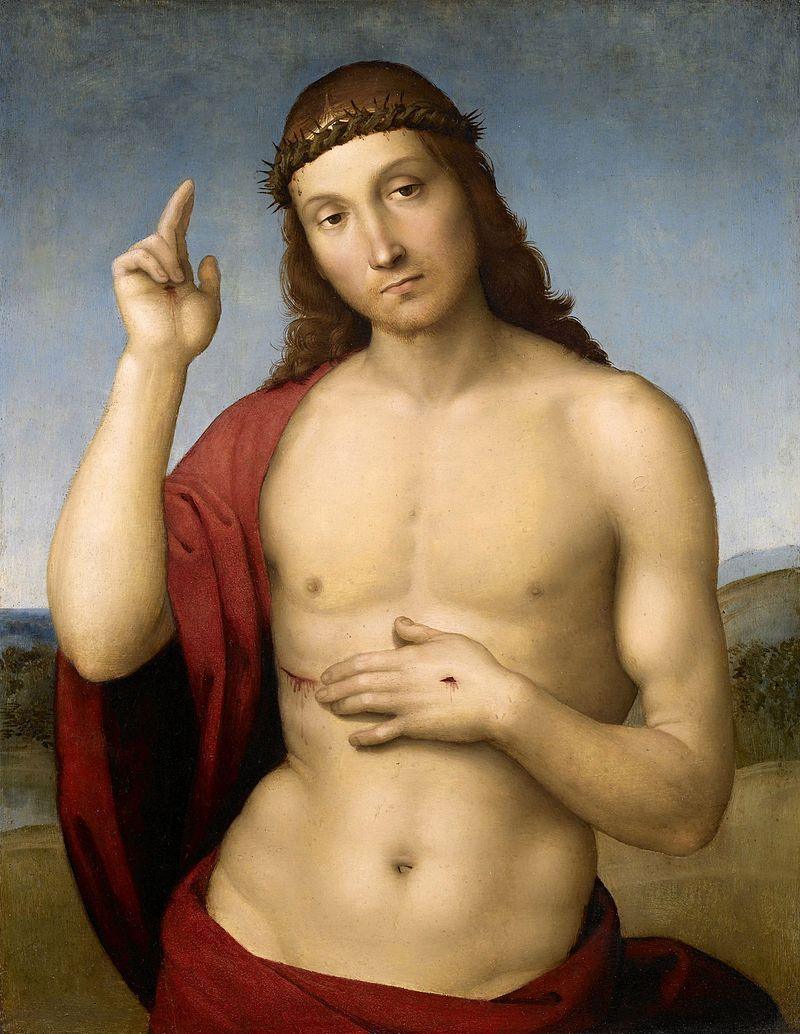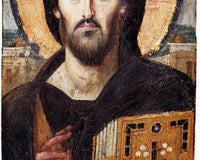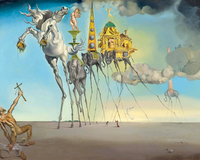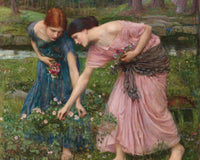While it is up to critics and historians to debate the technique and artistic merit of each work of art, there are some paintings that over the years still surprise with their impact on public opinion.
From works considered too obscene, too vulgar, or too bloody to acts of desecration or powerful political statements, these are some of the most controversial works of art ever created.
Kuadros has compiled 5 of the most controversial works in history. Do you agree with the selection? Which would you include?
No. 5 Olympia - Manet
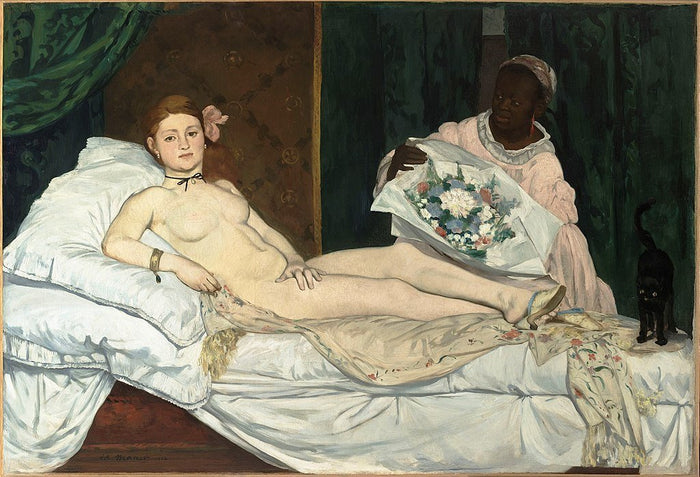
With Olympia, Manet challenged the traditional subject of the female nude, using a strong message. Both the subject and its representation explain the scandal caused by this painting at the Salon of 1865. Although Manet cited numerous iconographic references, such as Titian's Venus of Urbino, Goya's Naked Maja, and the theme of the Odalisque with her black slave, among others.
The painting portrays the cold and prosaic reality of a true contemporary subject, as Venus has become a prostitute, challenging the viewer with her direct gaze.
This desecration of the idealized nude, the very foundation of academic tradition, provoked a violent reaction in its time. Critics attacked the "yellow-bellied odalisque," whose modernity was defended by a small group of Manet's contemporaries led by Zola.
In addition to its flagrant sexual undertones, critics were disgusted by Manet's realistic presentation, whose color was compared to "the horror of the morgue" and whose hands and feet were described as "dirty" and "wrinkled".
Along with Luncheon on the Grass, Olympia is currently in the Musée d'Orsay in Paris. While the work has been a highlight of this museum for decades, it continues to inspire new debates and dialogues.
View Manet's Olympia at the Kuadros store
No. 4 The Last Judgment - Michelangelo

The Last Judgment by Michelangelo is located on the wall behind the altar in the Sistine Chapel. Its representation of the second coming of Christ in "The Last Judgment" generated immediate controversy from the Catholic Church of the Counter-Reformation.
Religious officials spoke out against the fresco for various reasons, one of which was the style in which Michelangelo painted Jesus without a beard and in the classical style of pagan mythology. But most relevant to the church were the 300 figures in the painting, mostly naked men.
Michelangelo was the subject of much criticism for this painting because they said he had created a controversy between art and religion. But in the end, Michelangelo's undeniable artistic skill triumphed over all his criticism. The genius's versatility in painting the human body in different poses is something that art connoisseurs could not overlook.
Acquire The Last Judgment by Michelangelo at the Kuadros store
No. 3 The Gross Clinic - Thomas Eakins

Recognized as one of the greatest American paintings ever created, this icon of American art was created specifically for the Centennial Exhibition in Philadelphia in 1876.
In this painting, the painter Thomas Eakins was eager to showcase his talent alongside the scientific advancements of the Jefferson Medical College located in Philadelphia.
The core of the painting is Dr. Gross, as the light and composition conspire to draw attention to the professor directing a clinic of five doctors operating on the left thigh of a patient.
But his depiction of surgery was considered too graphic, and the painting was rejected by the Philadelphia Exhibition, perhaps because the subject was too bloody and brutal to display in the art building, while some critics attacked his fearsome vulgar treatment of the subject and the added melodrama.
For Kuadros, Eakins captivates the audience with the reality of the work, the bright red blood shining and staining the surgeon's fingers and scalpel. The open incision is repugnant, but the viewer becomes just another person in the operating room.
Now, a century later, the painting has finally been recognized as one of the best works of its time, both for portraying honest details of form, depth, and proportion, as well as for its artistic and scientific merits.
Acquire Dr. Gross's Clinic at the Kuadros store
No. 2 The Origin of the World - Gustave Courbet


We could point to The Origin of the World (1866) as the most controversial work of art by Gustave Courbet.
The subject of the painting is undoubtedly provocative, presenting a naked woman with her legs open widely displaying her genitals. However, thanks to Courbet's great virtuosity and the refinement of his use of amber color, the painting escapes a pornographic scheme.
Gustave regularly painted female nudes, sometimes in a libertine manner. But in this work, it was the boldness and frankness that gave the painting a special fascination.
While many cite Olympia by Manet (1865) as the most revolutionary nude of the 19th century, in this work, Courbet takes the subject to an even more striking and controversial realm. Its high eroticism distinguishes it from other works.
The Origin of the World, now openly displayed, has taken its place in the history of modern painting. To this day it continues to provoke controversy over artistic censorship and voyeurism.
No.1 The Trench - Otto Dix 1920

Otto Dix began working on The Trench while serving on the Eastern and Western fronts of World War I.
His paintings, particularly The Trench Warfare (1920-3), were created in rejection of the growing Nazi campaign that sought to glorify war.
This painting is not horrifying in its surgical precision; it is the senseless violence that takes place on the battlefield and the aggressive brushstrokes that give it a sinister impact.
The best description was published by Walter Schmits in the Kölnische Zeitung on December 7, 1923: "In the cold and ghostly light of dawn ... a trench appears in which a devastating bombardment has just fallen. The pond shines in the depths like poisonous sulfur. The trench fills with horribly mutilated bodies and human fragments. Of the opened skulls, the brains burst out like thick red grains; torn limbs, intestines, fragments of uniforms form artillery projectiles ... a vile heap ... Remains of bodies half-fallen, which were probably buried in the trench walls for necessity and exposed by the explosive projectiles, mixed with fresh corpses covered in blood, impaled on stakes."
This work created during Nazi Germany was very controversial. It is believed that up to 200 of Dix's works were confiscated and destroyed by the Nazis, leaving little evidence of the painter's stunning artistic career.
KUADROS ©, a famous painting on your wall.


